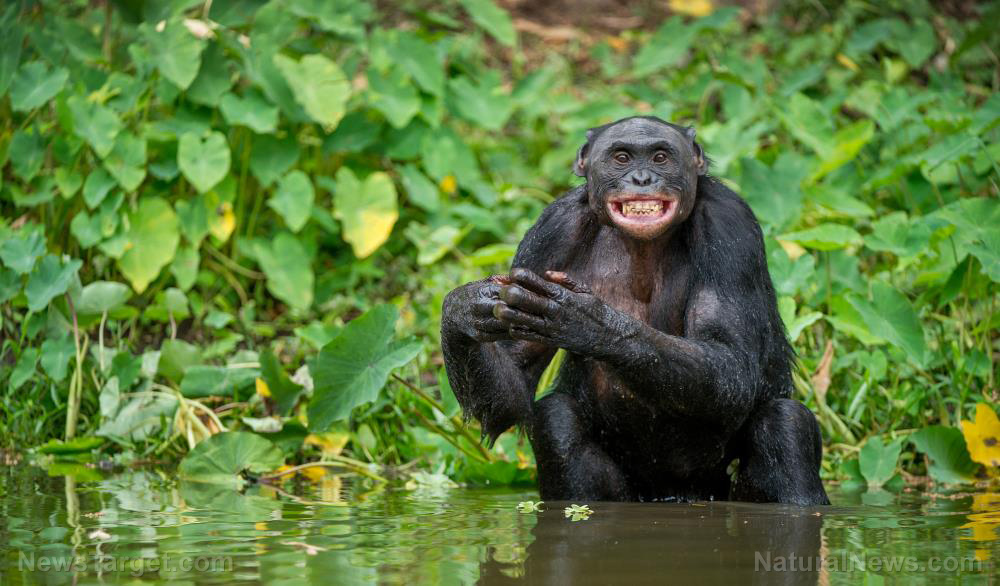Scientists say chimpanzees use language that follows rules similar to ours
06/03/2019 / By Vicki Batts

“Getting in touch with your wild side” is taking on a whole new meaning, now that we know chimps communicate in an astonishingly “human-like” way. Scientists say that while these clever primates may not be able to speak, their sign language follows many of the same patterns and rules used in human communication.
The finding illustrates not only the intelligence of chimpanzees, but the fact that we humans are not as “alone” on this planet as we like to think we are. If chimpanzees could talk, they would probably have a lot to say about what we have done to them and their environment — as virtually every other species on the planet would.
Chimpanzee language mirrors humans
A team of researchers from the University of Roehampton in London studied video footage of wild chimps from the Budongo Forest Reserve located in Uganda. Like many other primates, chimps cannot speak and instead use hand gestures to communicate. These gestures have often been likened to human sign language — and now, the Roehampton team has shown the similarity is stronger than previously believed. Study leader Raphaela Heesen is hopeful their findings will inspire more research into communication across the animal kingdom.
The Daily Mail reports that the chimps followed two basic laws of language: Zipf’s law of abbreviation, and Menzerath’s laws. Zipf’s law predicts commonly used words tend to be shorter, while Menzerath’s law suggests that “larger linguistic structures are made up of shorter parts – such as syllables within spoken words.”
Looking at footage of 2,000 examples of 58 different “play” gestures, the scientists found that the chimps followed these rules to a tee. Their longer signing sequences are built with shorter “syllable” gestures, and the signs they use most often are the shortest in length.
“Primate gestural communication is, of course, very different to human language, but our results show that these two systems are underpinned by the same mathematical principles. We hope that our work will pave the way for similar studies, to see quite how widespread these laws might be across the animal kingdom,” Heesen said in a statement.
Animals are smarter than we think
This is not the first time animals have surprised humans with their intelligence. Researchers from the University of Liège in Belgium studied monkeys in Indonesia, and were surprised to see that the monkeys had learned how to trade goods with humans in exchange for food. Of course, to get the goods, the monkeys must first steal them from other humans. Glasses, phones, jewelry and just about anything else a monkey can grab is fair game.
Study leader and primatologist Fany Brotcorne says that the monkeys in Bali were always trying to steal her things, even her research. Brotcorne says that the monkeys learned by watching each other. While they may not have understood stealing is wrong, they certainly learned how to get paid for it.
Scientists have observed all kinds of intelligence in other animals. Recently, it was discovered that female elk had learned how to evade hunters — and that they changed their evasion tactics based on whether it was rifle- or bow-hunting season. Female elk that make it to age 10 are so adept at escaping hunters that the researchers said they were “bulletproof.”
While humans like to think of themselves as the only sentient beings on the planet, animals continue to show us that’s simply not the case.
Learn more about animals and the world we live in at Environ.news.
Sources for this article include:
Tagged Under: animal intelligence, animals, chimpanzees, Communications, discoveries, environment, language, mammals, research, wildlife
RECENT NEWS & ARTICLES
COPYRIGHT © 2017 SCIENTIFIC NEWS



















